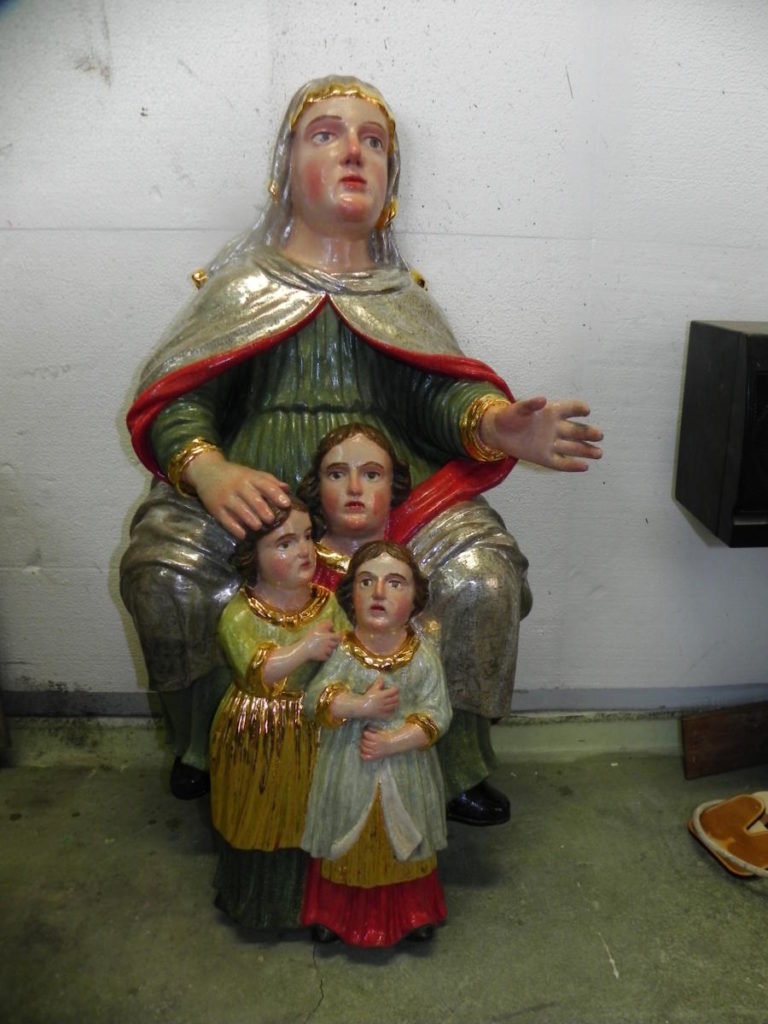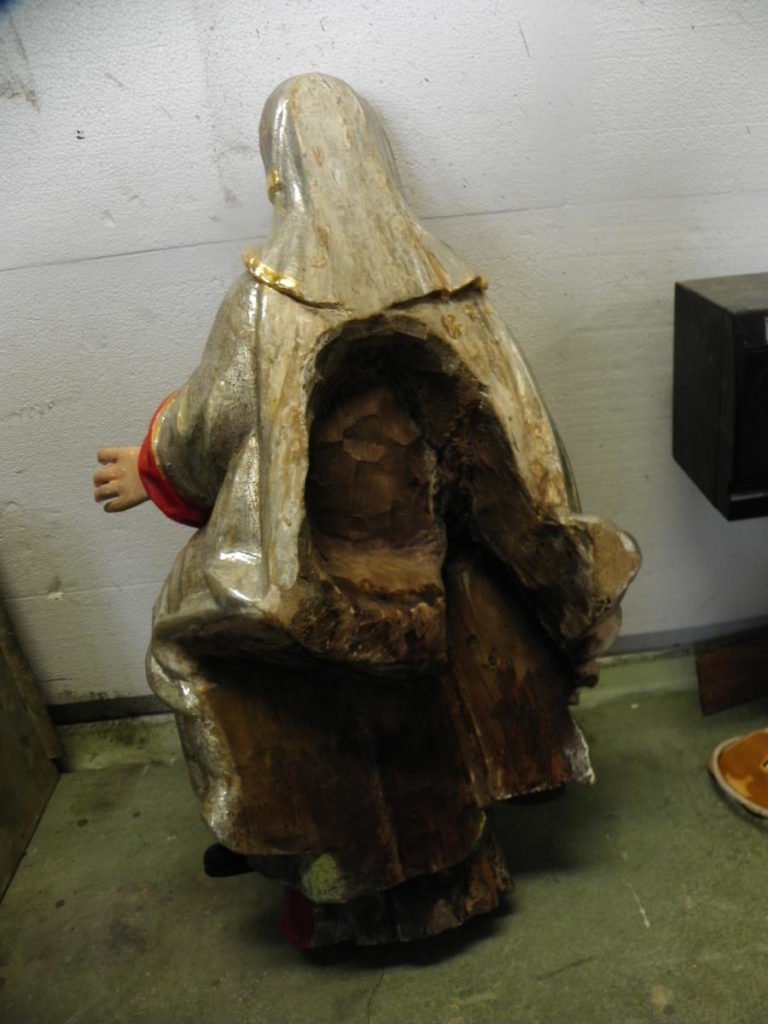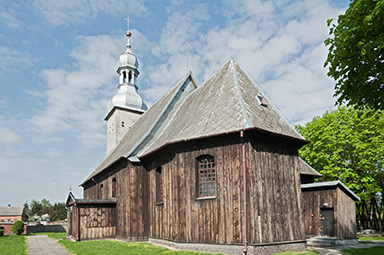
Church of the Blessed Virgin Mary in Starygród
RENOVATION OF THE SCULPTURE OF ST. SOPHIA FROM THE CHURCH OF THE PURIFICATION OF THE BLESSED VIRGIN MARY IN STARYGRÓD
The wooden sculpture of St. Sophia with daughters is an element of furnishing from the church of the Purification of the Blessed Virgin Mary in Starygród. It is a full-bodied sculpture, processed from three sides and carved from the back. It was made in the 18th century in folk style.
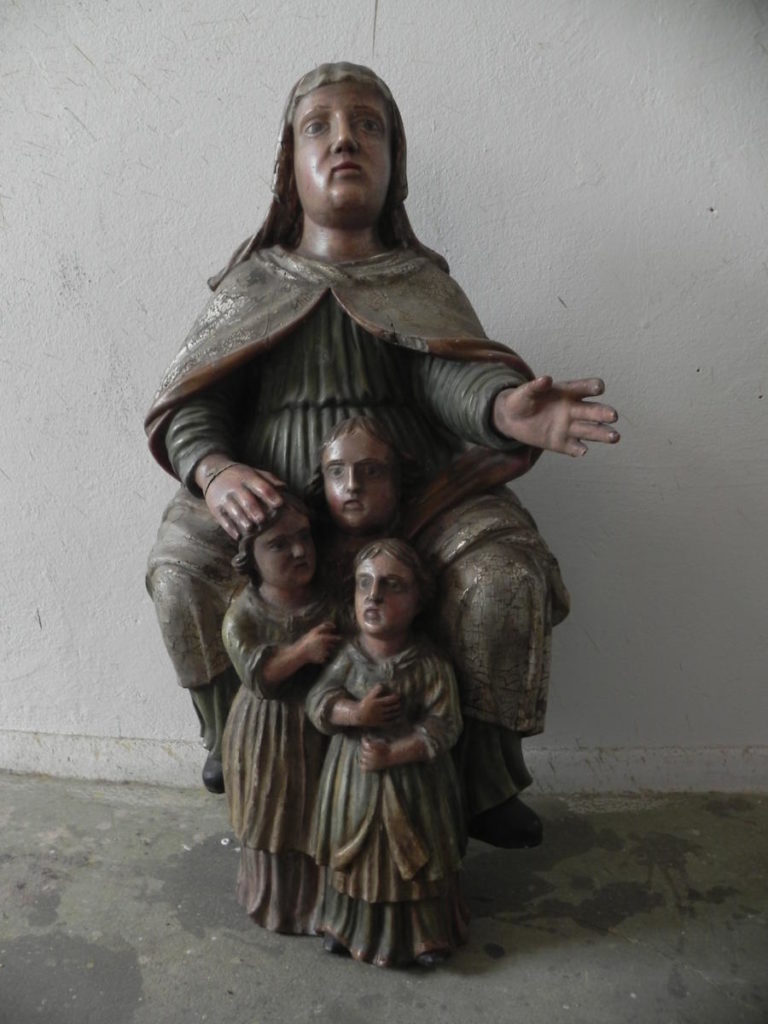
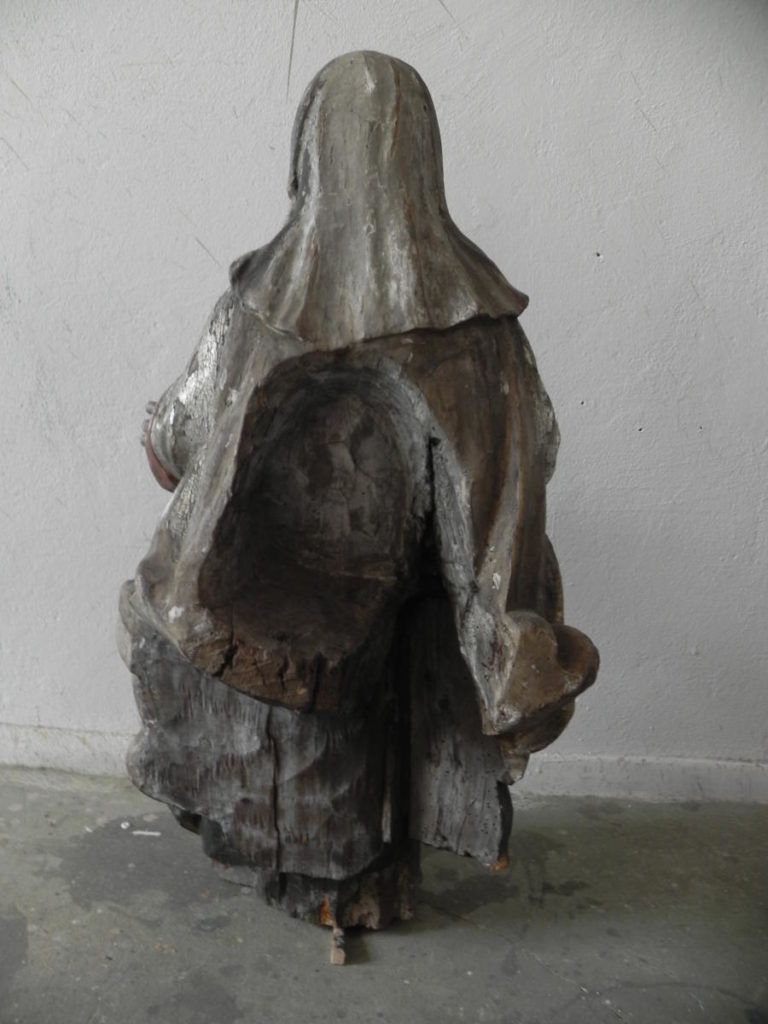
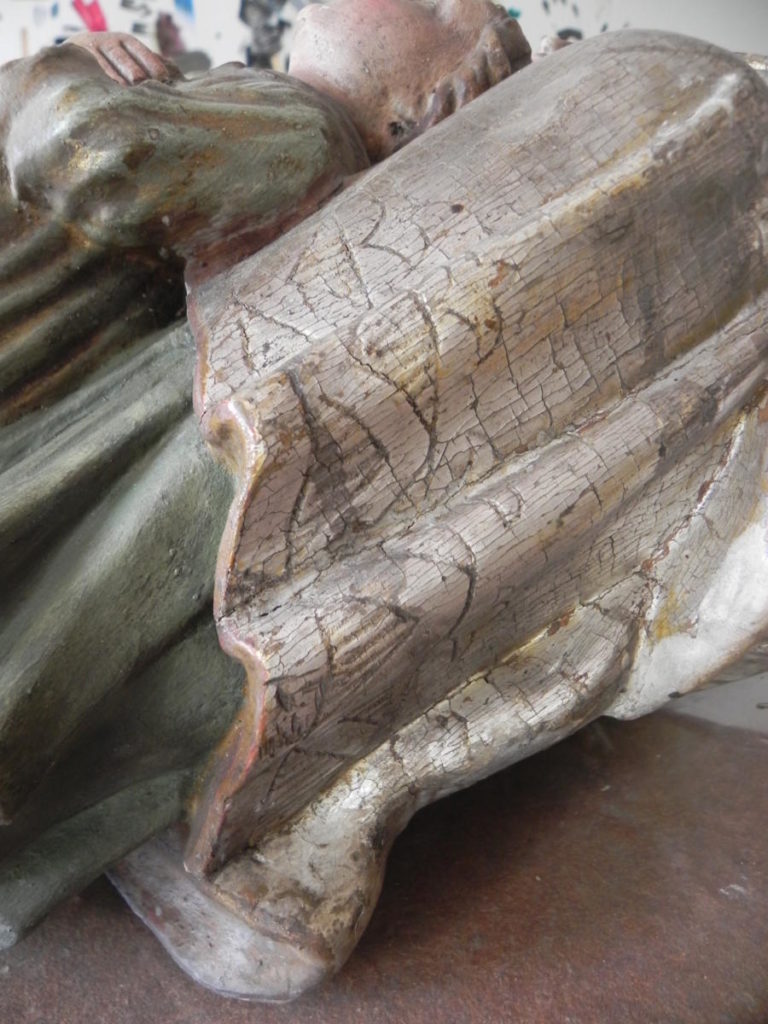
The condition of the sculpture required renovation. Weakening of wood structure caused by xylophages’ foraging posed a big problem. Multiple cracks and loosening of construction bonds and joints were seen. The layer of paint crumbled and fell off, many losses and cracks were seen.
The aim of renovation was prevention of decay processes and restoration of technical and aesthetic values of the object.
Renovation of the sculpture started with completion of photographic documentation, then the object was secured and transported to the workshop. Stratigraphic tests were conducted in order to identify the construction of the object, especially a range of distribution and condition of the original layers. Tests were done on materials and products so that the most effective method of ablation of historical layers could be selected. Then the surface of the sculpture was cleaned with products for washing of oil coatings. Primers from the silvering on the surface of St. Sophia’s cloak were moistened and ablated.
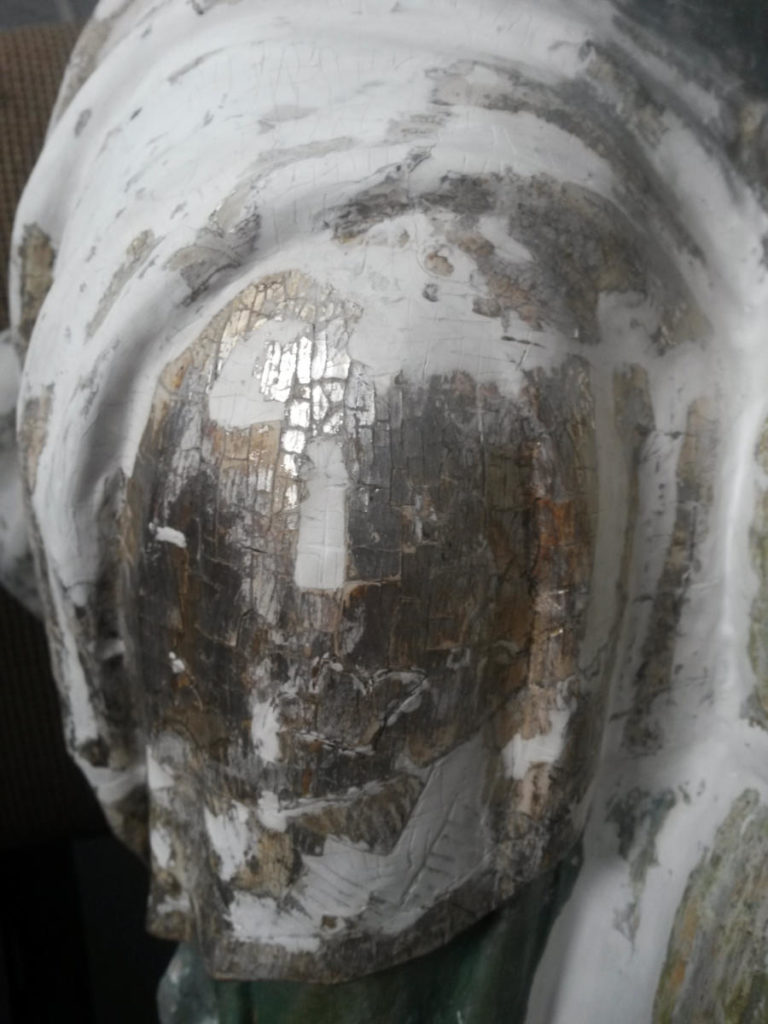
Then impregnation and sterilization were done. Impregnation was conducted by soaking the bases of the sculptures, injections in the holes after xylophages and application of solution on the back. The object was wrapped in foil in order to delay the process of evaporation which fosters an even application of resin in the structure of reinforced wood.
When the solvents evaporated wooden joints were repaired, cracks glued and losses filled with epoxy paste. New wood was protected against xylophages.
Next, the losses of primers were filled with chalk-adhesive mortar. On St. Sopia’s cloak engraving of craquelure was done to match the character of the surface with the original layer. Gilding and silvering were done with glues gold leaf and silver powder. The surface of silvering was protected with lacquer.
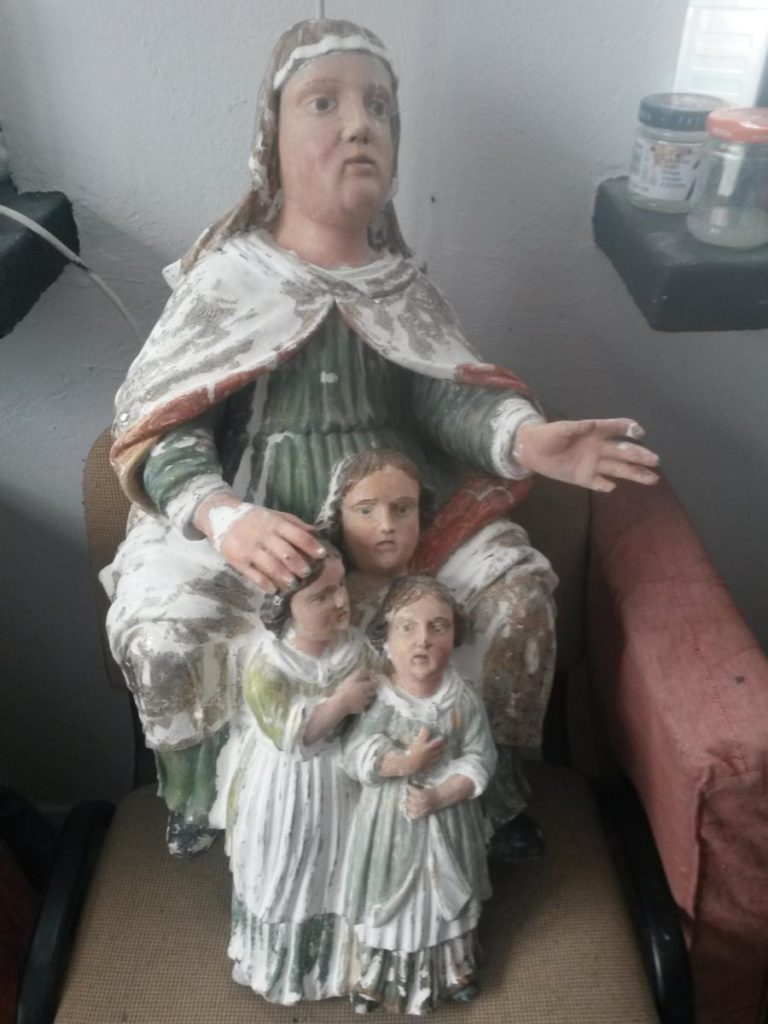
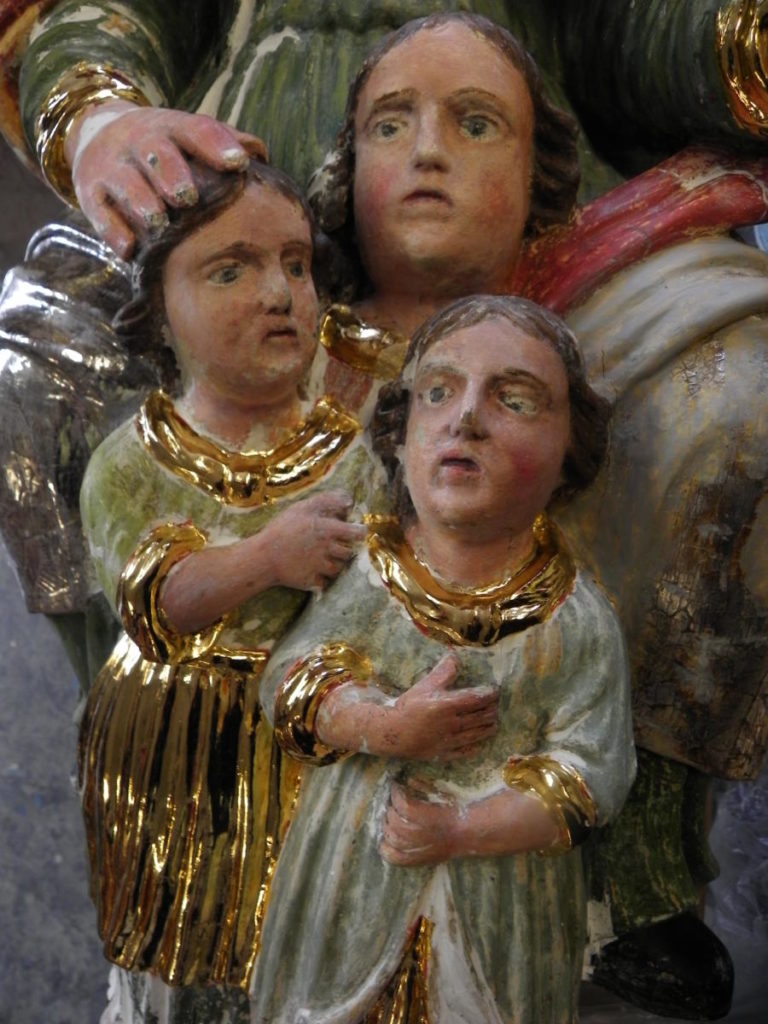
The polychromy was secured with retouch varnish which saturated the colours. Losses in the layer of paint were filled with imitation method with the use of oil and resin-based paints.
When the renovation finished, as-built documentation of renovation was made in the descriptive and photographic form.
